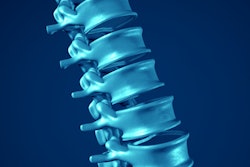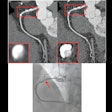Dear CT Insider,
The low participation rate of CT lung cancer screening continues to be one of its foremost setbacks. Could offering incentives for screening smokers with the highest risk of lung cancer help turn the tide?
Using a health policy simulation model, researchers from Massachusetts projected the effect that risk-targeted, incentivized CT lung screening could have on uptake and patient health. Discover the extent to which this kind of focused screening might be able to improve healthcare efficiency in this edition's Insider Exclusive.
Taking into account an individual's risk when determining their eligibility for CT lung screening may also prove useful for screening programs in Asia, considering that the population has a higher incidence of lung cancer in nonsmokers. In a new large-scale trial, researchers from Japan reported substantial reductions in cancer mortality with CT lung screening, even when including young and nonsmoking adults. A group from China detected a high proportion of early-stage cancers through a CT lung screening program that similarly covered low-risk individuals.
In recent years, CT has also emerged as a viable option for colorectal cancer screening. The U.S. Preventive Services Task Force released a draft research plan to investigate colon cancer screening much earlier than anticipated, due in part to accumulating evidence backing CT colonography screening.
Beyond its use for screening, CT has served a critical role in a wide range of clinical applications:
- Researchers from Italy used CT to guide pulsed radiofrequency therapy for alleviating lower back pain.
- A team of interventional radiologists also used CT guidance to facilitate treatment for back pain but specifically for steroid injections into the spine.
- Coronary CT angiography scans played a role in demonstrating that statins have the potential to decrease mortality risk in patients who have coronary artery disease, despite low levels of calcium and atherosclerosis.
- A team of investigators from the Massachusetts Institute of Technology used CT scans to evaluate the effect of space flight on astronauts' muscles.
CT has been especially popular in U.S. emergency departments. Researchers from the Harvey L. Neiman Health Policy Institute discovered that the use of emergency chest CT increased at a compound annual growth rate exceeding 20% from 1994 to 2015. A separate study by a group from Pennsylvania confirmed that emergency CT use for all body regions grew exponentially from 2004 to 2016.
The good news is that physicians from New York may have found a way to increase the efficiency of emergency CT workflow: Assign a dedicated expeditor in the emergency department.
Finally, a major international study that analyzed more than 2 million CT scans uncovered sizeable variation in CT radiation dose levels. On the plus side, simple adjustments to CT protocols could dramatically reduce this variation, according to the researchers.
Head over to the CT Community at AuntMinnie.com for more related news and stories.



















